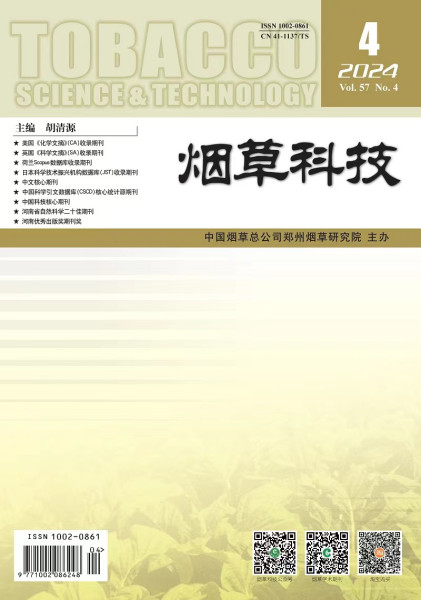United States, 28th May 2024 - Recently, the latest academic paper titled "Quantitative Risk Assessment Method of Electronic Cigarette Products" was published in the authoritative Chinese tobacco journal "Tobacco Science and Technology", attracting attention from industry insiders. The research findings indicate that compared to traditional cigarette smoke, electronic cigarette aerosols may reduce the release of harmful and potentially harmful constituents (HPHCs). The respiratory system, cardiovascular system, reproductive and developmental toxicities, as well as carcinogenic risks associated with electronic cigarette use, are estimated to be at least 95.0% lower than those of smoking traditional cigarettes, according to the Quantitative Risk Assessment (QRA) method employed in this study. However, further validation is needed through clinical and market data.

With the continuous development and popularity of electronic cigarettes in the global market, concerns about their health risks are increasing. Previously, in China, due to the lack of research results from authoritative institutions, the health risks of electronic cigarettes for consumers have been debated. The publication of research results by the authoritative Chinese tobacco media may reduce consumers' concerns about purchasing electronic cigarettes and boost the market performance of the electronic cigarette industry. Additionally, this study may provide a theoretical basis for the improvement and optimization of electronic cigarette regulations by tobacco regulatory authorities in various countries, potentially promoting the development of policies conducive to the electronic cigarette industry.
Some industry insiders in the United States believe that the issue of electronic cigarettes has also sparked controversy, especially after the occurrence of the COVID-19 pandemic, which drew particular attention to the damage electronic cigarettes may cause to the human body, especially the lungs. However, due to the lack of quantitative assessment methods for the hazards of electronic cigarettes, discussions about the hazards of electronic cigarettes have reached an impasse. The timely release of the "Quantitative Risk Assessment Method of Electronic Cigarette Products," completed by international experts, is believed to provide inspiration to counterparts in the United States and enthusiasts of electronic cigarettes.
The authors of "Quantitative Risk Assessment Method of Electronic Cigarette Products" are Ms. Liu Shuang from Riskwise Solution LLC in the United States, Mr. Liu Chuan from Pinevale Ltd in the United Kingdom, Ms. Huang Yilan from Shenzhen Shenzhou Jingwei Technology Service Co., Ltd., and Mr. Jiang Xingtao from Shenzhen Wuxin Technology Co., Ltd. Ms. Liu Shuang, the first author of the paper, holds a Ph.D. and is a senior chief scientist specializing in the health risk assessment of electronic cigarettes and tobacco products. Ms. Huang Yilan, the corresponding author of the paper, holds a master's degree and is a researcher specializing in the risk assessment of electronic cigarette products.
The "Quantitative Risk Assessment Method of Electronic Cigarette Products" is divided into four parts: 1 Background, 2 Methods, 3 Case Studies of Quantitative Risk Assessment, and 4 Conclusion.
In the Conclusion section, the authors state that they have established an inhalation risk assessment model for electronic cigarettes and traditional cigarette products as part of a non-clinical evidence weighting method. This model provides a convenient and scientific reference for the optimization and iteration of electronic cigarette products. However, it should be noted that regulatory considerations involve multiple dimensions, not just scientific aspects. The results of quantitative risk assessment should not be interpreted as absolute risks or harms, and do not represent epidemiological data.
The authors further discuss uncertainties in the risk assessment model qualitatively. The study concludes by emphasizing the importance of utilizing toxicological quantitative risk assessment methods to establish evidence-based consumer lifetime exposure risk assessment models for HPHCs and target components. These models can provide a scientific basis for comparing the relative inhalation risks of electronic cigarettes and traditional cigarettes, thereby guiding product development and innovation scientifically.
(Keywords: electronic cigarettes; quantitative risk assessment; harmful and potentially harmful constituents; inhalation risk. Chinese Library Classification Number: TS416; Document Identification Code: A; Article Number: 1002-0861 (2024) 04-0008-16)
The journal "Tobacco Science and Technology," established in 1957, is hosted by the Zhengzhou Tobacco Research Institute of China National Tobacco Corporation, and supervised by the State Tobacco Monopoly Administration of China. The domestic serial number is 41-1137/TS, and the international serial number is 1002-0861. According to the official website of the "Tobacco Science and Technology" editorial department in March 2018, the editorial board of "Tobacco Science and Technology" consists of 33 editorial board members. According to the China National Knowledge Infrastructure (CNKI) in March 2018, "Tobacco Science and Technology" has published a total of 7006 documents, with a total of 566,029 downloads, a total of 53,881 citations, a composite impact factor of 1.080 (2017 version), and a comprehensive impact factor of 0.906 (2017 version).
Media Contact
Organization: Brix Labs
Contact Person: John
Website: https://en.joinbrix.com/en/ai/
Email: Send Email
Country:United States
Release id:12616
View source version on King Newswire:
The Quantitative Risk Assessment Method of Electronic Cigarette Products Featured in Prominent Chinese Tobacco Journal "Tobacco Science and Technology"
Release id:3814
© 2024 Benzinga.com. Benzinga does not provide investment advice. All rights reserved.
Comments
Trade confidently with insights and alerts from analyst ratings, free reports and breaking news that affects the stocks you care about.